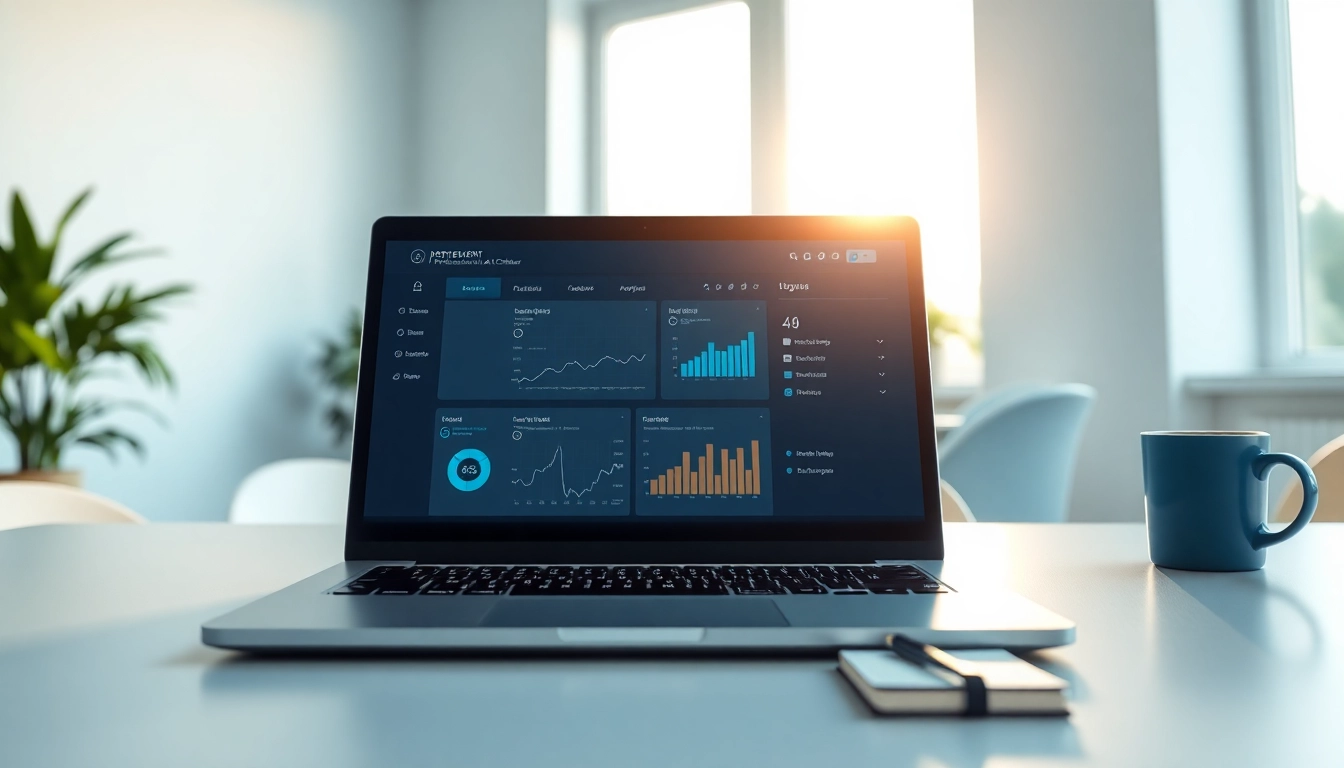Understanding the Basics of Website Design
Website design is a pivotal aspect of creating an online presence, and it requires an understanding of numerous elements and principles that contribute to a site’s success. When discussing website design, it is essential to recognize that it encompasses various skills and disciplines in building and maintaining websites. The broad field includes everything from web graphic design to user interface design, involving both technical and aesthetic dimensions.
Defining Website Design and Its Importance
At its core, website design is about creating a site that effectively conveys a message, engages users, and achieves specific goals. The importance of website design cannot be overstated; it determines the first impression visitors receive and influences user retention, engagement, and conversion rates. A well-designed website can enhance credibility, improve usability, and boost overall brand perception.
Moreover, an effective design aligns with the objectives of the business or organization and addresses the needs of its target audience. Understanding how various elements—from layout and color schemes to typography and graphics—work together is critical in designing a website that speaks to visitors.
Core Principles of Effective Website Design
Several core principles guide effective website design:
- Clarity: Users should easily understand the content and purpose of the site without confusion.
- Consistency: A unified design throughout the website fosters familiarity and enhances user trust.
- Contrast: Ensuring a clear distinction between various design elements can lead to better readability and engagement.
- Visual Hierarchy: This assists users in navigating the site by guiding their attention to the most important information first.
- Responsiveness: In an era where users access websites on multiple devices, ensuring a responsive design is crucial for a seamless experience.
Key Elements to Include in Your Website Design
To create a compelling website design, it is vital to incorporate key elements carefully. These include:
- Navigation: Simple and intuitive navigation makes it easier for users to find information.
- Content: Quality content is essential. It should be informative, engaging, and tailored to the needs of the audience.
- Images and Graphics: High-quality visuals can boost engagement and convey messages effectively.
- Call-to-Actions (CTAs): Strategically placed CTAs can guide users towards desired actions, such as signing up for a newsletter or making a purchase.
- Footer: A well-structured footer can provide important information, including contact details and links to privacy policies.
Exploring Different Styles of Website Design
Aesthetic Trends in Website Design
Website design trends evolve over time, driven by technological advancements and changing user preferences. Some prevalent aesthetic trends include:
- Bold Typography: Using large fonts can create an impactful presence and enhance readability.
- Minimalism: Stripped back designs focus on essential elements, helping users concentrate on the content.
- Dark Mode: Offering a dark theme can reduce eye strain and provide a modern aesthetic.
- Micro-animations: Small animations add interactivity and can lead to a more engaging user experience.
Responsive Website Design Best Practices
Responsive design is critical in ensuring websites function well across various devices, from desktops to smartphones. Best practices for achieving responsive design include:
- Fluid Grids: Using proportional sizes instead of fixed sizes allows elements to scale relative to the screen size.
- Flexible Images: Ensuring images can resize within their containing elements prevents overflow and distortion.
- Media Queries: Applying different styles based on screen size can help tailor the user experience effectively.
- Touch-Friendly Elements: Designing buttons and links that are easy to tap on touchscreen devices ensures better user interaction.
Comparing Minimalist and Maximalist Approaches
In website design, two contrasting approaches are often discussed: minimalism and maximalism.
Minimalism emphasizes simplicity and functionality, removing unnecessary elements to create a clean, streamlined look. This design philosophy is often favored for its user-friendly experience and quick loading times, which can enhance overall site performance.
On the other hand, maximalism embraces complexity and abundance, leveraging a wealth of colors, textures, and patterns to create a rich aesthetic that captivates users. While it can evoke strong emotional responses, careful consideration is necessary to avoid overwhelming visitors.
The choice between these approaches ultimately depends on the site’s purpose, target audience, and brand identity.
Tools and Technologies for Website Design
Popular Software Solutions for Website Design
A variety of software solutions are available for website design, helping creators build sites tailored to their objectives. Some commonly used tools include:
- Adobe XD: A powerful design tool that allows for rapid prototyping and collaboration.
- Sketch: Widely used for its vector graphic capabilities, particularly among UI and UX designers.
- Figma: A cloud-based design tool that facilitates real-time collaboration among team members.
- WordPress: Ideal for non-coders, as it offers customizable templates and plugins to enhance functionality.
Utilizing Templates vs. Custom Designs
When designing a website, a key decision is whether to use templates or create a custom design. Both options have their advantages:
- Templates offer convenience, speed, and cost-effectiveness, especially for those without advanced design skills. They can accelerate the development process and ensure a professional look without extensive investment.
- Custom designs, however, allow for greater flexibility and uniqueness, making it possible to create a site that truly embodies the brand. This approach requires more time and potentially higher costs but can yield a more tailored user experience.
Ultimately, the choice depends on the resources available, the level of customization desired, and the specific needs of the business.
Incorporating User-Friendly Features into Your Website Design
User-friendly features significantly enhance website usability and ensure a positive visitor experience. Key components to consider include:
- Search Functionality: A search bar enables users to find specific content quickly, enhancing navigation.
- Fast Load Times: Websites should be optimized to load quickly across all devices, as delays can lead to user frustration.
- Accessible Design: Considering accessibility ensures all users, including those with disabilities, can efficiently navigate the site.
- Clear Calls-to-Action: Effective CTAs prompt users towards desired actions, improving engagement and conversions.
Best Practices for Optimizing Website Design
SEO Considerations in Website Design
Search Engine Optimization (SEO) plays a vital role in website design, impacting how visibility and ranking are achieved in search engine results. Important SEO considerations include:
- Responsive Web Design: Google favors responsive sites, which perform similarly across all devices.
- Page Speed: Fast-loading pages enhance user experience and lower bounce rates, which are favorable to search rankings.
- Keyword Integration: Researching and naturally integrating relevant keywords into text can boost SEO effectiveness.
- Meta Tags: Proper use of title tags and meta descriptions can improve the likelihood of higher click-through rates on search engines.
Improving User Experience through Design
User experience (UX) is paramount in website design. Focusing on UX can lead to increased user satisfaction and engagement. Here are ways to enhance UX:
- Streamlined Navigation: Simplified navigation paths help users find information without frustration.
- Engaging Content: Valuable, relevant content keeps visitors on the site longer and encourages them to return.
- Feedback Mechanisms: Implementing tools for user feedback allows for continuous improvement based on audience input.
- Intuitive Design: Ensuring elements of the design are familiar to users minimizes the learning curve for navigation.
Analyzing Performance Metrics for Your Website Design
Regular analysis of performance metrics is essential for assessing the effectiveness of a website’s design. Key metrics to monitor include:
- Bounce Rate: High bounce rates may indicate usability issues that need addressing.
- Average Session Duration: Understanding how long users stay can provide insights into engagement levels.
- Conversion Rates: Tracking how many visitors complete desired actions can help measure success.
- User Feedback: Gathering qualitative feedback from visitors can provide insights into their experience, helping identify areas for improvement.
Future Trends in Website Design
Emerging Technologies Impacting Website Design
The field of website design is continually evolving, with emerging technologies shaping how websites are built and experienced. Key technologies include:
- Artificial Intelligence (AI): AI can provide personalized user experiences by analyzing user behavior and preferences.
- Augmented Reality (AR): Integrating AR offers immersive experiences that can enhance user engagement.
- Voice User Interface (VUI): VUI is becoming more prevalent, allowing users to interact with websites using voice commands.
- Progressive Web Apps (PWAs): These provide a native app-like experience through the web, significantly improving user interaction.
Forecasting User Behavior and Design Adaptations
As user behavior continually evolves, website design must adapt accordingly. Forecasting trends based on user preferences and emerging technologies can be beneficial. Considerations include:
- Mobile-First Design: With an increasing number of users accessing websites via mobile, prioritizing mobile-friendly designs is becoming a necessity.
- Personalization: Tailoring content to individual users can significantly enhance engagement.
- Interactive Content: Users are increasingly drawn to interactive elements, which can drive engagement and retention.
Sustainable Practices in Website Design
Sustainability is an emerging trend in website design, emphasizing eco-friendliness. Key practices include:
- Energy-Efficient Hosting: Selecting green hosting providers allows for a lower carbon footprint through sustainable practices.
- Optimized Code: Lean, efficient code can reduce server load and energy consumption.
- Content Management: Regularly auditing and minimizing multimedia content can contribute to energy savings by reducing data transfer.



